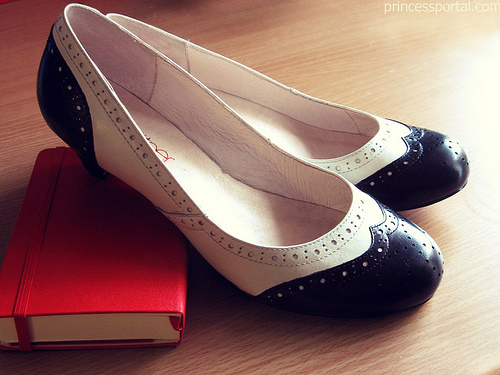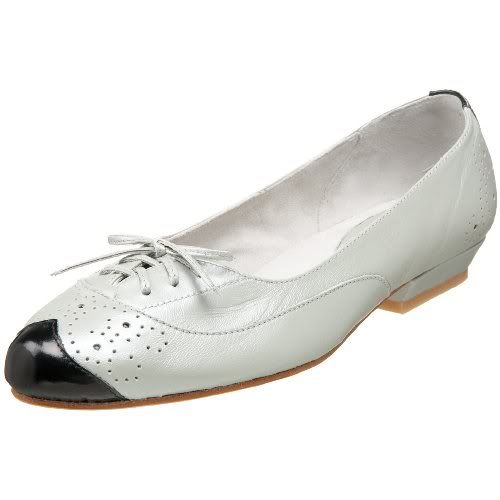2011 has been a splendid year for the fashion industry in Nigeria and abroad. So many fashion trends were introduced. For some that follow fashion trends and usually 'must' buy everything that's in, well am sure they spent lots of money buying some stuffs they might end up not wearing again. But for those that know how to mix and match, well it won't be a waste. We had trends like colour-blocking, vintage (or retro chic) , prints, street chic and so many more to mention a few.
Street Chic
I particularly like the street chic style, though it wasn't a big hit here in Nigeria. Street chic has this care-free attitude which I love. Dressing street chic isn't as hard as it seems. Though some people look effortlessly chic every single day, once you know the basic guidelines for dressing, being street chic can be a reality.
How to do street chic.
Cultivate your own sense of aesthetic. Everyone is unique, and therefore, everyone has diverse tastes. Know what you like in music, literature, movies and art. Incorporate these things into your style. To cultivate this, immerse yourself in different genres and be open minded to different people.
Know what colors look good on you. To figure out which color type you are and which colors look good on you go to http://www.askandyaboutclothes.com/Tutorials/CindyBuschColorAnalysis.htm. Once you got that figured out, wear these colors all the time.
Learn about proportion. The key to being street chic is balance. If you're wearing a loose top, pair it with a tight bottom. If you're wearing something baggy on the bottom, go with a lean shirt. The same goes for shoes. Chunky heels look out of proportion on petite girls, while stiletto heels look weird on girls with chunky calves. This also applies to showing skin. Only flaunt one part of you body. you want to look chic, not trashy (unless that's the look your going for).
Don't forget what's underneath. Always buy quality underwear in your size and basic colors like black and nude. You should have seamless knickers too in these colors. Wear the black one under dark colored clothing, the nude one under the light colored ones.

Accessorize! Necklaces, bracelets, rings, belts, bags, scarves and headgear. Pick whatever you like. There are lots of stores with different styles to suit your taste. Layer them if you like. I love bracelets and bangles. I love stacking them in different colours, shapes and sizes. Sometimes, more is actually better. At least when it comes to certain types of jewelry. Who can resist a wrist stacked with different bracelets, each an individual statement in its own right, as a way to pile on a little personality. These things make a basic outfit look stunning. When done right, accessorizing can be your best technique into looking street chic.
Choose a point of fashion. As in, 'Today, I'm an 80's raver' or 'Alice in Wonderland' or whatever.
Be creative, be whimsical and have fun!
The good thing about the street chic style is one is free to wear whatever and one will always be different.
Colour-blocking
Now this trend was a hit in Nigeria with everyone mixing colours. Some got it right while some didn't. It's all about mixing colours, not just any colours but bright, bold, solid colours. It isn't a trend for everyone; it's for those who are daring. The idea behind color blocking is simple in theory: pair solid - yet somewhat unexpected - blocks of color with each other to make a cohesive outfit. You can either go monochromatic, pair bright colors with muted colors or contrasting and complimentary colors. Accessories like handbags, shoes and jewelry can also feature color block designs to help complete and pull together any color block outfit.
Camilla Belle in Gucci
Dries Van Noten
Tips for pulling off color blocking:
Now its time to try your hand at color blocking. And just remember: this
trend is more about attitude than the clothes. If you choose to go with
it be ready for a few stares from onlookers that are either amazed at
your fashion sense or your courage. Either way, happy blocking!
Vintage
There was and there is still so much noise about this trend. People everywhere are caught up with one of the hottest fads to sweep the planet since sliced bread, and it is not even something new. Vintage clothing is making a big comeback everywhere and people are raving about how old can be so in and new. What is it about vintage clothing that people cannot get enough of and why is it so popular?
For us to better understand what vintage is and how to spot vintage clothing we have to first know the story behind its slow rise to the fashion scene. Typically, vintage clothing is something that was created back from the 1920's to the 1980's. Items of clothing like shirts, pants, tops, vests and other clothes worn in those eras are considered vintage. Other items like boots, shoes, accessories and other materials that were created for the purpose of being worn are also vintage items.
Vintage clothing is a generic term for new or second hand garments originating from a previous era. The phrase is also used in connection with a retail outlet, e.g. "vintage clothing store." Generally speaking, clothing which was produced before the 1920s is referred to as antique clothing and clothing from the 1920s to 1960s is considered vintage. Retro, short for retrospective, or "vintage style" usually refers to clothing that imitates the style of a previous era.
Most vintage clothing has been previously worn, but a small percentage of pieces have not. These are often old warehouse stock, and more valuable than those that have been worn, especially if they have their original tags. Although there has always been some demand for old and/or second hand clothing, the awareness, demand and acceptance of this has increased dramatically since the early 1990s. This increase in interest is due in part to increased visibility, as vintage clothing was increasingly worn by top models and celebrities, e.g. Julia Roberts, Renée Zellweger, Chloe Sevigny, Tatiana Sorokko, Kate Moss, and Dita von Teese.
Vintage garments designed by the following designers are particularly sought after - especially when they are representative of the designer or the era: Coco Chanel, Paul Poiret, Mariano Fortuny, Elsa Schiaparelli, Jeanne Paquin, Madeleine Vionnet, Jeanne Lanvin, Christian Dior, Hubert de Givenchy, Claire McCardell, Cristobal Balenciaga, Emilio Pucci, Yves Saint-Laurent, Ossie Clark, Biba, Mary Quant, Pierre Cardin, Halston, Giorgio Armani, Zandra Rhodes, Vivienne Westwood, Thierry Mugler, Gianni Versace, and Jean Paul Gaultier.
Generally speaking, clothing older than 25 years is considered to be vintage, though opinions vary on this definition. Many sellers of vintage clothing consider even more modern pieces to be ‘vintage’, provided that they are particularly representative of the era in which they were made.
With all these explanation, I would say that vintage is second hand or what we call 'okrika' here in Nigeria, well that is if you are buying the one that has been worn by someone else from a previous era.
Here Drew Barrymore is wearing a dress she bought at a vintage store for $20. So great!
Kim Kardashian wearing a reworked version of her mom’s vintage Valentino (1984)
Julia Roberts in vintage Valentino (1982) at the 2001 Oscars.
Note that vintage isn't all about the dresses, bags or shoes. There are also vintage accessories or jewellery.
Here we have celebrities wearing vintage diamonds and jewellery at the Oscars.
1.} British actress Carey Mulligan, the Best Actress nominee wore a stunning pair of 19th century cascading diamond earrings from Fred Leighton.
2.} Presenter Elizabeth Banks also wore a vintage Fred Leighton - an understated diamond headband.
3.} Julianne Moore wore 2 diamond and platinum Bulgari (circa 1930) - from their historical archives collection.
4.} Vera Farmiga wore a pair of 1920s diamond clip earrings vintage Fred Leighton and a 1960's diamond cluster cocktail ring.
5.} Sarah Jessica Parker wore 19th century diamond cluster earrings.
6.} Maggie Gyllenhaal's bracelet is a Fred Leighton 1940's diamond cluster statement bracelet.
7.} Charlize Theron wearing a vintage marquise diamond wave bracelet by Harry Winston.
8.} Jennifer Lopez wore vintage Cartier diamond clip earrings circa 1934.
9.} Meryl Streep wore a magnificent Fred Leighton Art Deco diamond and oynx bracelet teamed with a silver purse.
Have been able to talk about some of the fashion trends that rocked 2011. So which represents you better?
Street Chic
I particularly like the street chic style, though it wasn't a big hit here in Nigeria. Street chic has this care-free attitude which I love. Dressing street chic isn't as hard as it seems. Though some people look effortlessly chic every single day, once you know the basic guidelines for dressing, being street chic can be a reality.
How to do street chic.
Cultivate your own sense of aesthetic. Everyone is unique, and therefore, everyone has diverse tastes. Know what you like in music, literature, movies and art. Incorporate these things into your style. To cultivate this, immerse yourself in different genres and be open minded to different people.
Know what colors look good on you. To figure out which color type you are and which colors look good on you go to http://www.askandyaboutclothes.com/Tutorials/CindyBuschColorAnalysis.htm. Once you got that figured out, wear these colors all the time.
Learn about proportion. The key to being street chic is balance. If you're wearing a loose top, pair it with a tight bottom. If you're wearing something baggy on the bottom, go with a lean shirt. The same goes for shoes. Chunky heels look out of proportion on petite girls, while stiletto heels look weird on girls with chunky calves. This also applies to showing skin. Only flaunt one part of you body. you want to look chic, not trashy (unless that's the look your going for).
Don't forget what's underneath. Always buy quality underwear in your size and basic colors like black and nude. You should have seamless knickers too in these colors. Wear the black one under dark colored clothing, the nude one under the light colored ones.

Accessorize! Necklaces, bracelets, rings, belts, bags, scarves and headgear. Pick whatever you like. There are lots of stores with different styles to suit your taste. Layer them if you like. I love bracelets and bangles. I love stacking them in different colours, shapes and sizes. Sometimes, more is actually better. At least when it comes to certain types of jewelry. Who can resist a wrist stacked with different bracelets, each an individual statement in its own right, as a way to pile on a little personality. These things make a basic outfit look stunning. When done right, accessorizing can be your best technique into looking street chic.
Choose a point of fashion. As in, 'Today, I'm an 80's raver' or 'Alice in Wonderland' or whatever.
Be creative, be whimsical and have fun!
The good thing about the street chic style is one is free to wear whatever and one will always be different.
Colour-blocking
Now this trend was a hit in Nigeria with everyone mixing colours. Some got it right while some didn't. It's all about mixing colours, not just any colours but bright, bold, solid colours. It isn't a trend for everyone; it's for those who are daring. The idea behind color blocking is simple in theory: pair solid - yet somewhat unexpected - blocks of color with each other to make a cohesive outfit. You can either go monochromatic, pair bright colors with muted colors or contrasting and complimentary colors. Accessories like handbags, shoes and jewelry can also feature color block designs to help complete and pull together any color block outfit.
Jennifer Lopez in Gucci
Leighton Meester in Missoni and Kristen Stewart in Balenciaga Resort
Dries Van Noten
Tips for pulling off color blocking:
- Team colors from the same family together for a cohesive look – think bright pinks with vivid fuchsias, turquoise with royal blue;
- Keep warmer tones like orange and red together;
- Go for a neutral-toned shoe to keep it simple
- Opposites Attract: think purples with oranges; lime green with melon or rosebud pink for a jarring, but pleasant, combination;
- Work accessories into the mix. Select a contrasting shoe or handbag.
Mix it up
- Work regal purples in with contrasting, fiery oranges;
- Try lime green with melon or rosebud pink for a pleasantly jarring combination;
- Go to town on the look with a loud, contrasting shoe or handbag.
Vintage
For us to better understand what vintage is and how to spot vintage clothing we have to first know the story behind its slow rise to the fashion scene. Typically, vintage clothing is something that was created back from the 1920's to the 1980's. Items of clothing like shirts, pants, tops, vests and other clothes worn in those eras are considered vintage. Other items like boots, shoes, accessories and other materials that were created for the purpose of being worn are also vintage items.
Vintage clothing is a generic term for new or second hand garments originating from a previous era. The phrase is also used in connection with a retail outlet, e.g. "vintage clothing store." Generally speaking, clothing which was produced before the 1920s is referred to as antique clothing and clothing from the 1920s to 1960s is considered vintage. Retro, short for retrospective, or "vintage style" usually refers to clothing that imitates the style of a previous era.
Most vintage clothing has been previously worn, but a small percentage of pieces have not. These are often old warehouse stock, and more valuable than those that have been worn, especially if they have their original tags. Although there has always been some demand for old and/or second hand clothing, the awareness, demand and acceptance of this has increased dramatically since the early 1990s. This increase in interest is due in part to increased visibility, as vintage clothing was increasingly worn by top models and celebrities, e.g. Julia Roberts, Renée Zellweger, Chloe Sevigny, Tatiana Sorokko, Kate Moss, and Dita von Teese.
Vintage garments designed by the following designers are particularly sought after - especially when they are representative of the designer or the era: Coco Chanel, Paul Poiret, Mariano Fortuny, Elsa Schiaparelli, Jeanne Paquin, Madeleine Vionnet, Jeanne Lanvin, Christian Dior, Hubert de Givenchy, Claire McCardell, Cristobal Balenciaga, Emilio Pucci, Yves Saint-Laurent, Ossie Clark, Biba, Mary Quant, Pierre Cardin, Halston, Giorgio Armani, Zandra Rhodes, Vivienne Westwood, Thierry Mugler, Gianni Versace, and Jean Paul Gaultier.
Generally speaking, clothing older than 25 years is considered to be vintage, though opinions vary on this definition. Many sellers of vintage clothing consider even more modern pieces to be ‘vintage’, provided that they are particularly representative of the era in which they were made.
With all these explanation, I would say that vintage is second hand or what we call 'okrika' here in Nigeria, well that is if you are buying the one that has been worn by someone else from a previous era.
Here Drew Barrymore is wearing a dress she bought at a vintage store for $20. So great!
Kim Kardashian wearing a reworked version of her mom’s vintage Valentino (1984)
Julia Roberts in vintage Valentino (1982) at the 2001 Oscars.
Note that vintage isn't all about the dresses, bags or shoes. There are also vintage accessories or jewellery.
Here we have celebrities wearing vintage diamonds and jewellery at the Oscars.
1.} British actress Carey Mulligan, the Best Actress nominee wore a stunning pair of 19th century cascading diamond earrings from Fred Leighton.
2.} Presenter Elizabeth Banks also wore a vintage Fred Leighton - an understated diamond headband.
3.} Julianne Moore wore 2 diamond and platinum Bulgari (circa 1930) - from their historical archives collection.
4.} Vera Farmiga wore a pair of 1920s diamond clip earrings vintage Fred Leighton and a 1960's diamond cluster cocktail ring.
5.} Sarah Jessica Parker wore 19th century diamond cluster earrings.
6.} Maggie Gyllenhaal's bracelet is a Fred Leighton 1940's diamond cluster statement bracelet.
7.} Charlize Theron wearing a vintage marquise diamond wave bracelet by Harry Winston.
8.} Jennifer Lopez wore vintage Cartier diamond clip earrings circa 1934.
9.} Meryl Streep wore a magnificent Fred Leighton Art Deco diamond and oynx bracelet teamed with a silver purse.
Have been able to talk about some of the fashion trends that rocked 2011. So which represents you better?











































